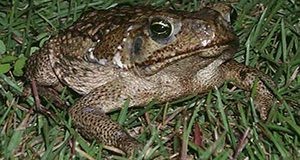Abstract
Global trade and travel transport plants and animals from native ranges to new ecosystems. About 10 to 20% of nonnative (exotic, alien) species that arrive in new locales become invasive, meaning they are likely to harm the environment, economy, or public health. Preventing the introduction of invasive species is the most effective way to protect native biodiversity and ecosystem integrity. Once an invader begins to establish and spread, its control costs increase rapidly. Florida ports are the entry points for about half of the reptiles, arachnids, insects, and crustaceans imported into the United States. These arrivals, coupled with hospitable climate and habitats, have made Florida home to more invasive species than any other state but Hawaii. While it is too late to prevent the invasion of Burmese pythons and Argentine black and white tegus, we can act to prevent other potentially destructive species from establishing. This 5-page fact sheet explains how to assess the risk that a given invasive species presents to the environment, and how to develop and use risk-screening tools to reduce the harmful effects of invasions or, better yet, prevent them entirely. Written by Venetia Briggs-Gonzalez, Kyle Allen, Rebecca G. Harvey, and Frank J. Mazzotti, and published by the Department of Wildlife Ecology and Conservation, August 2016.
WEC374/UW419: Ecological Risk Assessment for Invasive Wildlife in Florida (ufl.edu)
References
Bomford, M. 2008. Risk assessment models for establishment of exotic vertebrates in Australia and New Zealand. Invasive Animals Cooperative Research Centre. Canberra, Australian Commonwealth Territory. 198pp.
Bomford, M., F. Kraus, M. Braysher, L. Walter, and L. Brown. 2005. Risk assessment model for the import and keeping of exotic reptiles and amphibians. Bureau of Rural Sciences. 110pp.
Fujisaki, I., K.M. Hart, F.J. Mazzotti, K.G. Rice, S. Snow, and M. Rochford. 2009. "Risk assessment of potential invasiveness of exotic reptiles imported to south Florida." Biological Invasions 12(8): 2585-2596. https://doi.org/10.1007/s10530-009-9667-1
Gordon, D.R., K.J. Tancig, D.A. Onderdonk, and C.A. Gantz. 2011. "Assessing the invasive potential of biofuel species proposed for Florida and the United States using the Australian Weed Risk Assessment." Biomass and Bioenergy 35(1): 74-79. https://doi.org/10.1016/j.biombioe.2010.08.029
Hill, J.E., and K.M. Lawson. 2015. "Risk screening of Arapaima, a new species proposed for aquaculture in Florida." North American Journal of Fisheries Management. 35(5): 885-894. https://doi.org/10.1080/02755947.2015.1064835
Jenkins, P.T., K. Genovese, and H. Ruffler. 2007. Broken screens: the regulation of live animal imports in the United States. Defenders of Wildlife, Washington, D.C. 56pp.
Kolar, C.S., and D.M. Lodge. 2002. "Ecological predictions and risk assessment for alien fishes in North America." Science 298: 1233-1236. https://doi.org/10.1126/science.1075753
Lawson, L.L., Jr, J.E. Hill, L. Vilizzi, S. Hardin, and G.H. Copp. 2013. "Revisions of the Fish Invasiveness Screening Kit (FISK) for its application in warmer climatic zones, with particular reference to peninsular Florida." Risk Analysis 33:1414-1431. https://doi.org/10.1111/j.1539-6924.2012.01896.x
Pheloung, P.C., P.A. Williams, and S.R. Halloy. 1999. "A weed risk assessment model for use as a biosecurity tool evaluating plant introductions." J. Environ. Manag. 57: 239-251. https://doi.org/10.1006/jema.1999.0297
Reed, R.N., J.D. Willson, G.H. Rodda, and M.E. Dorcas. 2012. "Ecological correlates of invasion impact for Burmese pythons in Florida." Integrative Zoology 7(3): 254-270. https://doi.org/10.1111/j.1749-4877.2012.00304.x
Ricciardi, A. 2003. "Predicting the impacts of an introduced species from its invasion history: an empirical approach applied to Zebra Mussel invasions." Freshwater Biology 48: 972-981. https://doi.org/10.1046/j.1365-2427.2003.01071.x
Romagosa, C.M. 2011. "A summary of live animal importation by the United States." http://www.evergladescisma.org/SummaryofUSliveanimalimports.pdf.
For University of Florida's complete report summarizing invasive species risk assessments, including references, see http://crocdoc.ifas.ufl.edu/publications/reports/riskassessment.pdf.

